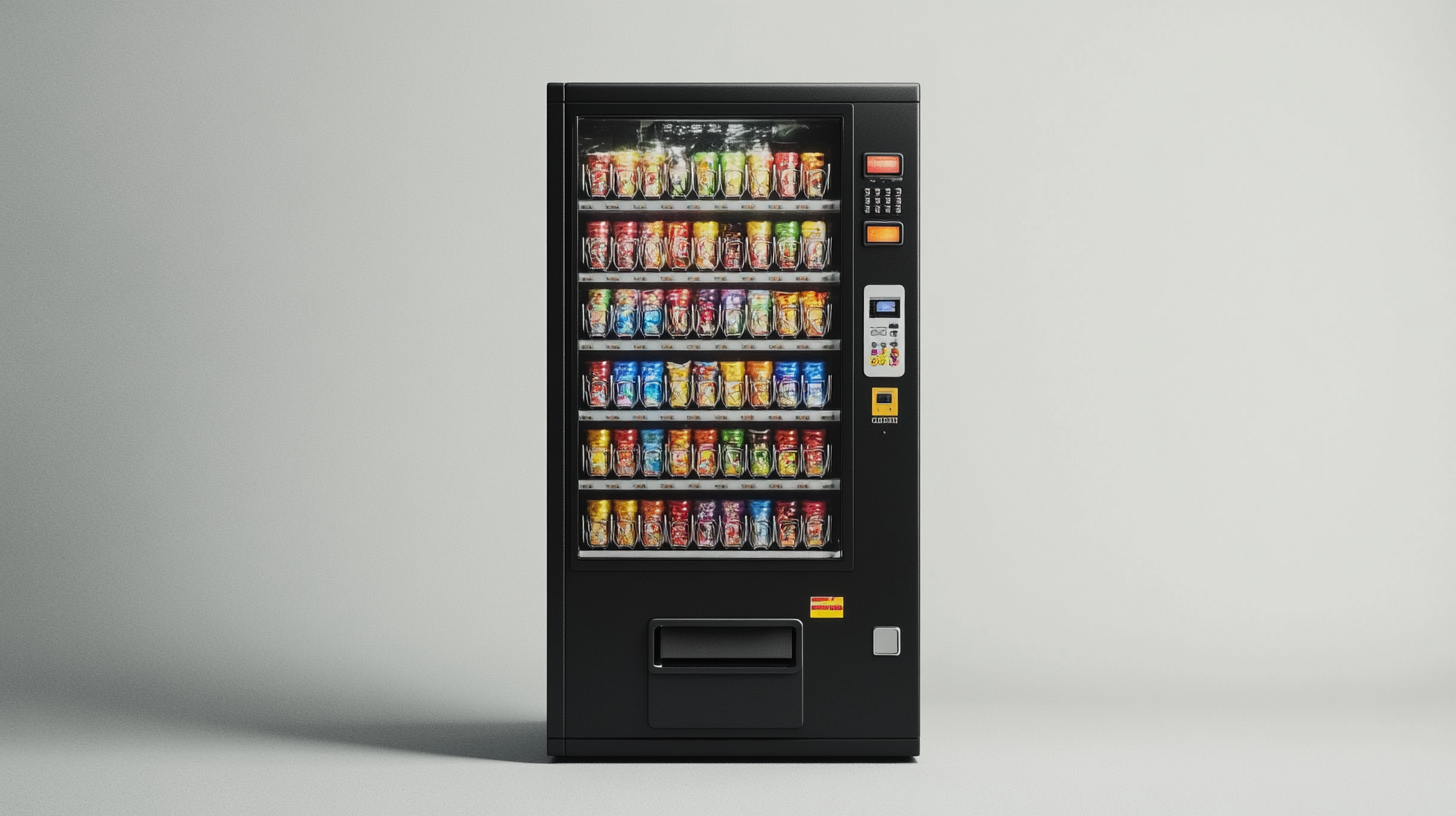10 Essential Tips for Mastering Machine Vending Machines
In recent years, the popularity of machine vending machines has surged, transforming the landscape of retail and convenience sales. According to a report by IBISWorld, the vending machine industry in the United States alone is projected to reach a market size of $25 billion by 2025, driven by the increasing demand for accessible, on-the-go solutions for consumers. This growth is attributed to innovations in technology, such as touchless payment systems and smart vending solutions that enhance user experience and operational efficiency. As machine vending machines continue to evolve, understanding the nuances of their operation and management is crucial for maximizing profitability and customer satisfaction.
Mastering the art of managing machine vending machines requires a strategic approach that encompasses product selection, location analysis, and customer engagement. A recent study by Statista revealed that approximately 30% of consumers are likely to use vending machines that offer healthier snack options, showcasing a shift in consumer preferences towards more diverse and nutritious offerings. Implementing effective marketing strategies, utilizing digital platforms for tracking sales, and maintaining equipment functionality are essential for operators aiming to thrive in this competitive market. This blog post will provide ten essential tips for mastering machine vending machines, equipping operators with the tools necessary for success in this dynamic sector.

Understanding the Basics of Machine Vending Machines and Their Operations
Machine vending machines have revolutionized the way we access products and services, offering convenience and efficiency. At their core, these automated systems function by dispensing goods in exchange for payment, often utilizing various payment methods such as cash, credit cards, or mobile wallets. Understanding the basic mechanics of machine vending operations is essential for anyone looking to master this technology. The operation of vending machines involves a combination of sophisticated electronics, user interfaces, and logistical components. Each machine is equipped with a product selection mechanism that allows users to choose their desired item, followed by a payment system that authenticates the transaction. Once a payment is processed, the machine releases the selected product, showcasing a seamless interaction between technology and consumer demand. Familiarizing oneself with the components of these machines will not only enhance user experience but also improve maintenance and troubleshooting skills. Moreover, the technology behind vending machines is continually evolving. Modern machines incorporate smart features such as inventory tracking, remote monitoring, and even touchless payment options to cater to changing consumer preferences. Understanding these advancements is crucial for operators and entrepreneurs aiming to stay competitive in the market. By grasping the fundamentals of how machine vending machines operate, individuals can effectively manage their use and harness the full potential of this innovative vending solution.

Identifying Profitable Products to Stock in Your Vending Machines
When considering the stocking of vending machines, it's essential to tailor products to the type of machine you are operating. Automatic vending machines traditionally excel in offering a diverse range of snacks, beverages, and even healthier food options. For these machines, popular choices include bottled water, energy drinks, chips, and various candy bars. Additionally, innovative items like protein bars or gluten-free snacks can attract a health-conscious demographic, making them ideal products for placement.
On the other hand, wall-mounted vending machines are often more limited in space, necessitating a focused approach to product selection. These machines typically do well with high-demand items such as bottled juices or ready-to-eat meals that cater to busy individuals looking for quick, nutritious options. Snacks like cookies, granola, or bagged nuts can also perform well, providing convenience without compromising quality.
As the vending industry continues to evolve, smart vending machines equipped with advanced technology are gaining traction. These machines allow for dynamic product offerings based on real-time sales data, making it possible to adjust inventory to meet consumer preferences. When stocking these machines, consider incorporating trendy health foods, artisanal snacks, or locally sourced beverages to appeal to modern consumers looking for unique products that set them apart from traditional vending options.

Strategies for Optimal Placement of Your Vending Machines
When strategizing the placement of your vending machines, understanding the ideal locations is crucial for maximizing visibility and accessibility. Locations that attract high foot traffic, such as busy shopping centers, office buildings, and educational institutions, are prime candidates. These areas not only ensure a steady stream of potential customers but also enhance the likelihood of impulsive purchases.
It's also important to consider the type of products you are offering and tailor your machine placements accordingly. For instance, if you are vending healthy snacks or beverages, positioning your machines near fitness centers or health-conscious cafés can attract the target demographic. Additionally, unique vending machine setups, like those offering convenience items in places where traditional stores might not operate, can provide significant competitive advantages.
Moreover, keep in mind that effective placement can extend beyond just foot traffic. Conducting research on existing vending services in the area can help you identify gaps and opportunities. With innovative offerings, like machines dispensing water or healthy food options, you cater to changing consumer preferences while creating a niche market. Adapting your strategy based on local demand and trends will ensure that your vending machines are not only functional but also appealing to a wide range of customers.

Effective Marketing Techniques to Boost Vending Machine Sales
To ensure your vending machine business stands out in a competitive market, effective marketing techniques are crucial. One powerful strategy is to leverage social media platforms to engage with potential customers. By creating visually appealing content showcasing your machine’s offerings, you can attract attention and encourage foot traffic. Regular posts highlighting promotions, new product arrivals, and customer testimonials can help build a community around your brand, fostering loyalty and repeat business.
Another essential marketing technique is strategic placement of your vending machines. Location is vital; consider high-traffic areas such as office buildings, schools, and gyms. Collaborating with local businesses or event organizers can provide better visibility and access to your target market. Furthermore, offering exclusive deals or partnering with popular local brands can enhance your machine’s appeal, drawing in customers seeking unique products they can’t find elsewhere.
In addition to these strategies, utilizing digital signage on your vending machines can significantly improve customer interaction. Displaying dynamic ads or customized promotions directly on the machine engages customers as they approach, making them more likely to make a purchase. Incorporating mobile payment solutions can also streamline the buying process, appealing to tech-savvy consumers and boosting overall sales.
Maintaining and Servicing Your Vending Machines for Longevity and Efficiency
The vending machine industry has seen significant growth in recent years, propelled by both demand and advancements in technology. As the market remains in its nascent stage, there is substantial potential for expansion and profitability. For operators looking to maximize their investments in vending machines, maintaining and servicing these machines is critical for longevity and efficiency. Regular maintenance not only ensures the reliability of machines but also enhances the consumer experience, which can directly impact sales.
According to industry research, the global vending machine market is projected to reach approximately USD 30 billion by 2025, reflecting a compound annual growth rate (CAGR) of around 10%. This growth underscores the importance of strategic management in the vending machine sector. Operators should invest in consistent servicing schedules to prevent breakdowns and downtime. Simple tasks such as regularly checking inventory levels, cleaning the machine’s exterior and interior, and ensuring all components are functioning correctly can make a significant difference.
Moreover, embracing technology can further improve the efficiency of vending machines. Incorporating IoT connectivity allows for real-time monitoring of stock levels and machine performance, enabling operators to anticipate maintenance needs before they become critical. As companies aim to differentiate themselves in a competitive market, leveraging data analytics from vending operations can provide valuable insights into consumer preferences and purchasing behavior, ultimately driving profitability in the long run.

